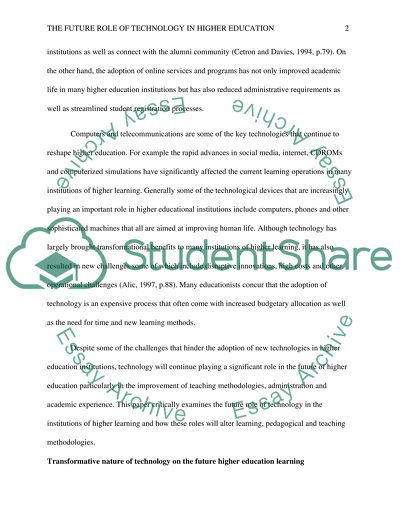Cite this document
(“The Future Role of Technology in Higher Education Article”, n.d.)
The Future Role of Technology in Higher Education Article. Retrieved from https://studentshare.org/education/1400400-the-future-role-of-technology-in-higher-education
The Future Role of Technology in Higher Education Article. Retrieved from https://studentshare.org/education/1400400-the-future-role-of-technology-in-higher-education
(The Future Role of Technology in Higher Education Article)
The Future Role of Technology in Higher Education Article. https://studentshare.org/education/1400400-the-future-role-of-technology-in-higher-education.
The Future Role of Technology in Higher Education Article. https://studentshare.org/education/1400400-the-future-role-of-technology-in-higher-education.
“The Future Role of Technology in Higher Education Article”, n.d. https://studentshare.org/education/1400400-the-future-role-of-technology-in-higher-education.


